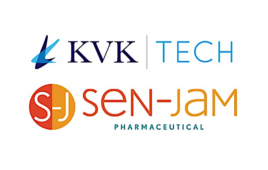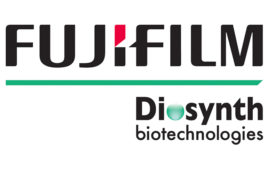The US Food and Drug Administration (FDA) introduced the idea of Quality by Design (QbD) in 2004 as part of the Process Analytical Technology Guidance. The purpose was to design quality into the product and process rather than try to test quality into the product at the end on the production line. It has been known for a long time that “quality by testing” is a low-yield and costly strategy. In 2005 ICH outlined the concept of design space in its Q8 guideline that focused on product development. Since that time, pharmaceutical and biotech companies – despite depending on innovation for their livelihood – have been slow to adopt QbD. This article focuses on what has happened in the interim and some of the current trends. In short, QbD is alive and well and growing.
QbD is Not New
QbD has its origins dating back to the 1950s when the first ideas of the operating window, now called the “design space” in the Pharma and Biotech world were put forth (Box and Wilson 1951). Juran popularized the term “Quality by Design” in his 1992 book. Some say that pharma and biotech are behind the times. Others see that the ‘glass is half-full’ and that pharma and biotech can come up the learning curve much more quickly than other industries did in the past by building on what has been learned in the field in over the last 30-40 years of implementation.
FDA Continues to Promote Use of QbD
In January 2011 FDA announced their new process validation guidance which leans heavily on the ICH documents, Q8, Q9 and Q10 stating, in the introduction that,
“This guidance aligns process validation activities with a product lifecycle concept and with existing FDA guidance, including the FDA/International Conference on Harmonization (ICH) guidances for industry, Q8 (R2) Pharmaceutical Development, Q9 Quality Risk Management, and Q10 Pharmaceutical Quality System. Although this guidance does not repeat the concepts and principles explained in those guidances, FDA encourages the use of modern pharmaceutical development concepts, quality risk management, and quality systems at all stages of the manufacturing process lifecycle.”
In June 2011 FDA Center for Drug Evaluation and Research updated its “Manual of Policy and Procedures” (MAPP 5016.1) to read regarding applying ICH Q8 (R2), Q9, and Q10 Principles to CMC Review,
“This MAPP outlines and clarifies how the chemistry, manufacturing, and controls (CMC) reviewers in the Office of Pharmaceutical Science (OPS) should apply the recommendations in the ICH Q8 (R2), Q9, and Q10 guidances to industry. OPS CMC reviewers will consider ICH Q8 (R2), Q9, and Q10 recommendations when reviewing applications that may or may not include QbD approaches.”
In 2012 FDA commented on the use of QbD in development of generic drugs:
“We encourage you to apply Quality by Design (QbD) principles to the pharmaceutical development of your future original ANDA product submissions, as of January 1, 2013. A risk-based, scientifically sound submission would be expected to include the following: Quality target product profile (QTPP), critical quality attributes (CQAs) of the drug product, product design and understanding including identification of critical attributes of excipients, drug substance(s), and/or container closure systems, process design and understanding including identification of critical process parameters and in-process material attributes control strategy and justification. Examples illustrating QbD concepts can be found online at FDA’s Generic Drugs: Information for Industry webpage (Pharmaceutical Manufacturing, July/August, 2012).
Resistance to a New Idea Is a Natural Human Reaction
First we should recognize that resistance is a natural human reaction; resistance happens to all new ideas, not just QbD. In order to create and sustain use of QbD, it must be recognized that using QbD is a culture change and a well planned initiative using a culture change strategies and models like that proposed by John Kotter (1996) must be utilized. Some critical building blocks include a strategy, a plan, QbD demonstration projects and periodic management review at several levels in the organization – strategic, managerial and operational.

Figure 1. Lanuguage helps us build partnerships. Source: Snee Associates, LLC
Companies, large and small are adopting QbD and progress is being made. There continues to be conferences on the subject in the US, India and Europe. The subject is discussed frequently in the literature. ISPE, among other organizations have developed best practices to guide its deployment. But there is much work to be done.
QbD Provides a Common Language for Outsourcing Partnerships
One area that needs attention is outsourcing to CMOs which is on the increase. Some companies want to develop partnerships to increase the effectiveness of CMO relationships. Partnerships are more easily praised than practiced and should be viewed as a something needing constant attention over its lifetime. Viewed as a continuing process requires a common language, common method of working together; both needed for the development of trust, an essential ingredient of a healthy partnership (Figure 1). Wikipedia (2013) defines language as a system of communication that enables humans to cooperate. Language is more than words; it includes symbols, gestures, methods, processes, etc.
QbD can also help create the approach and common language needed for developing the relationships required for successful outsourcing (Snee 2011a). QbD is a disciplined and systematic approach for effectively creating and communicating the process understanding needed to develop, launch and operate compliant processes (Snee 2012). A holistic approach to QbD with a focus on how the needed process understanding is developed to enable effective process development, transfer, improvement and control. Improved communication and collaboration is developed as a natural by-product of using QbD. Quality by Design enables both sponsors and CMOs to increase competitiveness.
Technology transfer is also critical to successful Sponsor-CMO relationships. QbD can help here as well. The price paid by the Pharma Company to the CMO is a function of the risks involved including: technology transfer will be done rapidly and smoothly, manufacturing will be stable and capable. Risk is a function of process understanding – Ability to: predict process performance and move technical information between the parties. An effective strategy is to use QbD to build quality into critical processes thereby increasing process understanding and reducing risk. Some critical processes include: product and process design, technology transfer, manufacturing and process control and quality assurance and control.
QbD provides a common language for tech transfer, a focus on quality, speed and reduced costs; role definition at all levels enhances communication and identifies the needed skills. Also included are structures for tech transfer at the tech transfer program level and individual tech transfer project level and the needed tech transfer management systems such as project selection and sequencing, management review, communication and recognition and reward, measurement system evaluation and the creation of the needed process understanding. (Alaedini, Snee and Hagen 2007)
QbD Is More Than Design of Experiments
QbD must also be done effectively for the approach to deliver the promised benefits. An impression that one might get from reading the literature is that QbD is synomous with design of experiments (DOE). That all you need to do to implement QbD is to use DOE. Nothing could be further from the truth. DOE is an important tool of QbD but QbD has many more important building blocks such as process control, process robustness, failure modes assessment, etc. (Snee 2009)

Figure 2. Strategic phases of experimentation. Source: Snee Associates, LLC
When developing models used to create the design space it is important to have a strategy to guide the experimentation such as that discussed in Snee (2010, 2011b) and summarized in Figure 2. This approach which was developed at DuPont in the 1960s and was used as an integral part of their QbD work speeding up the experimentation process, thereby increasing the probability the right data are collected at the right time.
Another important consideration is that the models used to develop the design space be confirmed before used to construct the design space (short-term validation). It is also critical that an ongoing process of model verification (long-term verification) be done as the manufacturing process operates. Such a process should be an integral part of the “Continued Process Verification” system that is an integral part of Stage 3 of the FDA’s new process validation guidance (FDA 2011).
QbD Has Many Benefits
Experience has shown that QbD is an effective method for developing new products and processes, enabling effective technology transfer, and the optimization and improvement of existing processes. QbD enables the development of process understanding that is fundamental to tech transfer, creation of design space and sustaining performance, process control and improvement systems and very important, the reduction of risk. QbD also provides a common language and methodology for working together – creating win-win partnerships resulting in the promised regulatory flexibility, improved process performance and compliance and enhanced bottom-line results for all parties involved.
References
Alaedini, Pedram, R. D. Snee and B. W, Hagen (2007) “Technology Transfer by Design – Using Lean Six Sigma to Improve the Process”. Contract Pharma, June 2007, 4-9.
Box, G. E. P and K. P. Wilson (1951) “On the Experimental Attainment of Optimum Conditions”, J. Royal Statistical Society, Series B, XIII(1), 1-45.
FDA (2004). “Guidance for Industry: PAT – A Framework for Pharmaceutical Development, Manufacturing and Quality Assurance”, US Food and Drug Administration, Rockville, MD, September 2004.
FDA (2011). “Guidance for Industry: Process Validation: General Principles and Practices“, US Food and Drug Administration, Rockville, MD, January 2011.
FDA (2012) Information for Industry Webpage: http://www.fda.gov/downloads/Drugs/DevelopmentApprovalProcess/HowDrugsareDevelopedandApproved/ApprovalApplications/AbbreviatedNewDrugApplicationANDAGenerics/UCM286595.pdf”
ICH Harmonized Tripartite Guideline: Pharmaceutical Development, Q8 (R2), Current Step 4 Version, August 2005, updated August 2009.
Juran, J. M. (1992) Juran on Quality by Design-The New Steps for Planning Quality into Goods and Services, Free Press, New York, NY.
Kotter, John (1996) Leading Change, Harvard Business School Press, Boston, MA
Snee, R. D. (2009) “Quality by Design: Four Years and Three Myths Later”, Pharmaceutical Processing, February 2009.
Snee, R. D. (2009) “Building a Framework for Quality by Design”, Pharmaceutical Technology, October 2009, Online Supplement.
Snee, R. D. (2010) “Experimental Strategies for Implementing Quality by Design”, Pharmaceutical Processing, April 2010, 12-16.
Snee, R. D. (2011a) “Using Quality by Design to Enable CMO Manufacturing Process Development, Control and Improvement”, Pharmaceutical Outsourcing, January/February 2011, 10-18.
Snee, R. D. (2011b) “Think Strategically for Design of Experiments Success”, BioProcess International, March 2011, 18-25.
Snee, R. D. (2012) “Process Understanding: Critical to Successful Process Development, Operation and Improvement”, Pharmaceutical Processing, May 2012, 38-41.
About the author:
Ronald D. Snee, PhD is founder and president of Snee Associates, a firm dedicated to the successful implementation of process and organizational improvement initiatives. He provides guidance to senior executives in their pursuit of improved business performance using Quality by Design, Lean Six Sigma, and other improvement approaches that produce bottom line results. He worked at the DuPont Company for 24 years prior to initiating his consulting career. He also serves as an Adjunct Professor in the Pharmaceutical programs at Temple University and at Rutgers University. Ron received his BA from Washington and Jefferson College and MS and PhD degrees from Rutgers University. He is an academician in the International Academy for Quality and a fellow of the American Society of Quality, the American Statistical Association, and the American Association for the Advancement of Science. He has been awarded ASQ’s Shewhart and Grant Medals, and ASA’s Deming Lecture Award as well as more than 20 other awards and honors. He is a frequent speaker and has published five books and more than 235 papers in the fields of performance improvement, quality, management and statistics. He can be reached at Ron@SneeAssociates.com




